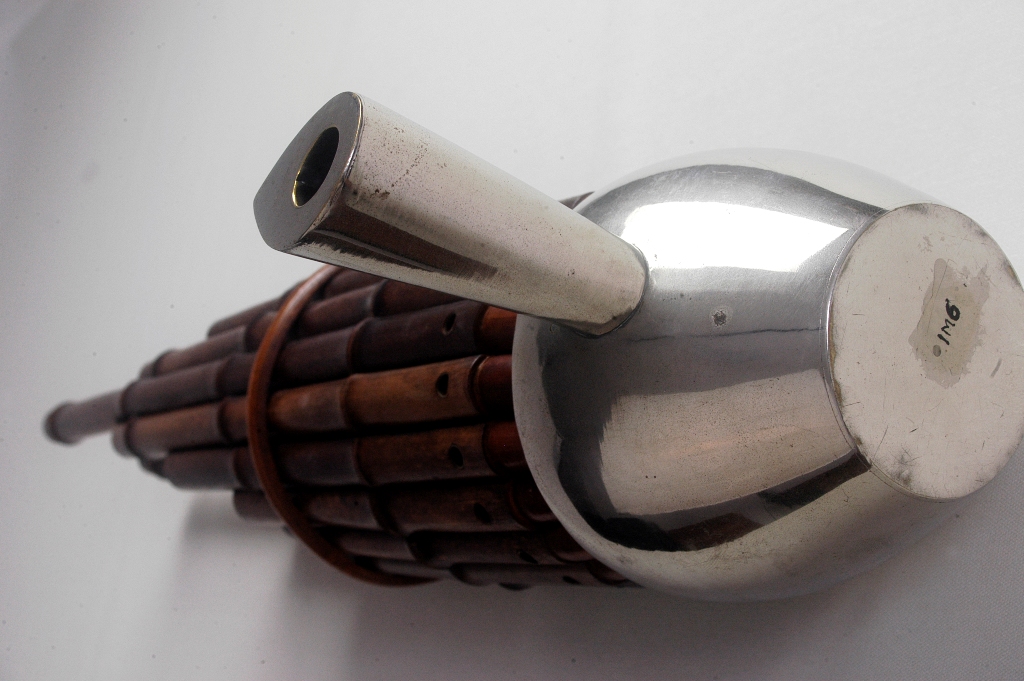{{article:6675}}
{{article:6676}}
Mouth organ (412.132). Its invention is attributed to the mythical Chinese sovereign, Nyu-Kwa (ca. 2800 a.C.). It is mentioned since the 12th c. a.C, although there are no representations until the 6th c. a.D. There are different varieties with different names, distinguished according to their size and the number and function of their pipes.
Usually as in this case, the sheng is made of seventeen bamboo pipes inserted into a metal — or wooden lacquered — receptacle shaped like a feeding cup which replaces the original gourd. Inside it thirteen tubes have in their end a metal free reed, tuned by a wax drop. Also they have a fingerhole above the rim of such receptacle.
The apparent thirteen pipes’ length as well as the length of the remaining four, without sound function, make the instrument resemble a phoenix with its wings up and spread out. The sheng is played holding the receptacle with both palms while blowing or aspirating through the spout and the fingers simultaneosly covering several holes. w. 14.5 x h. 48 cm.

